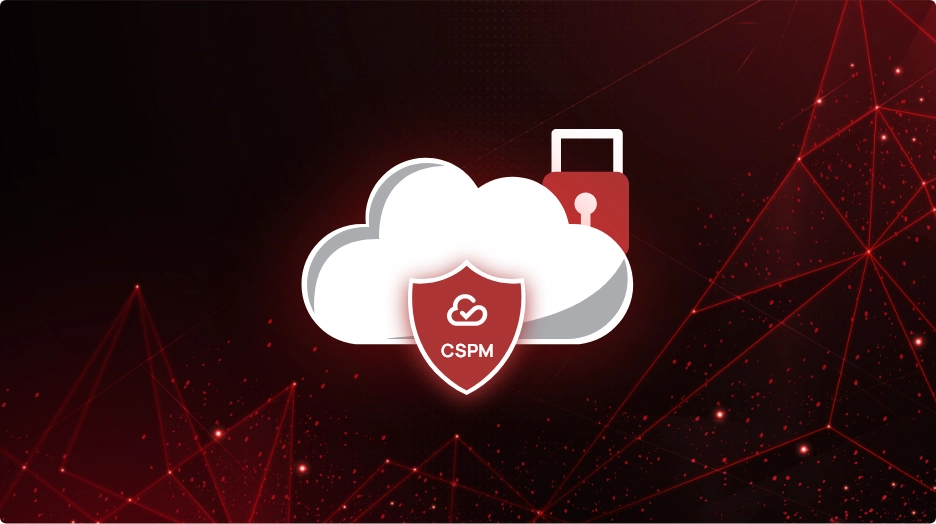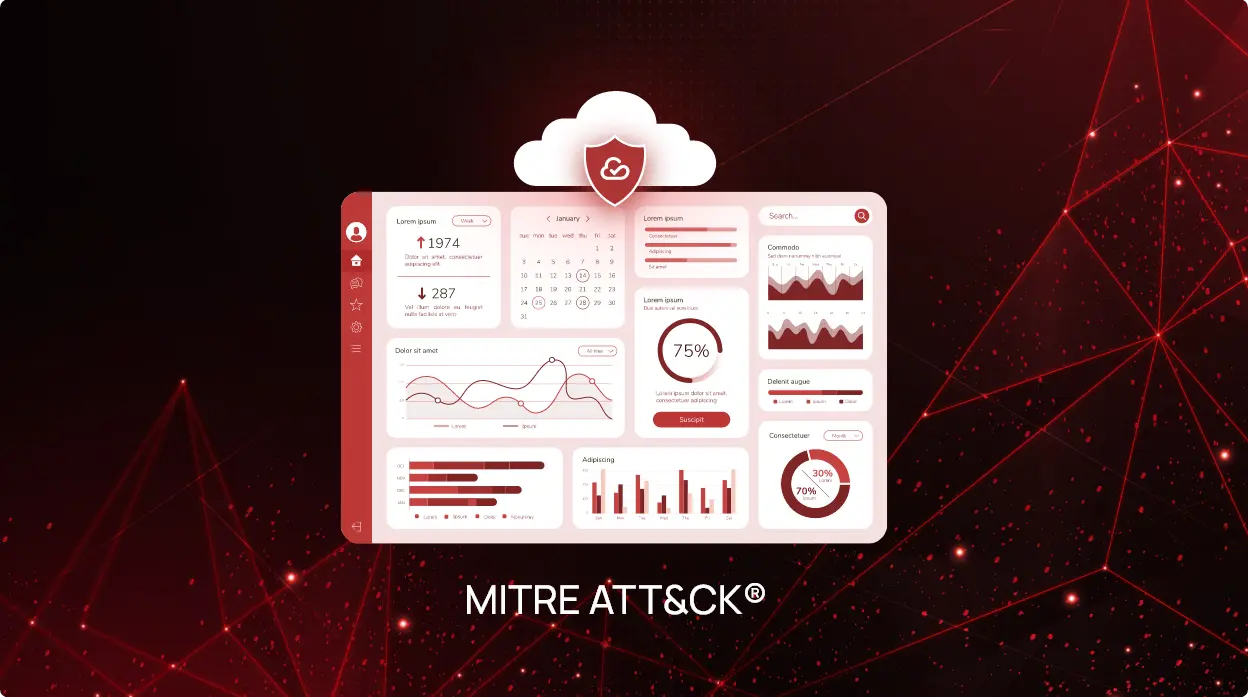
Vinod Sisodiya
Senior Product Manager
Cloud Security with CSPM: Defending Against Cloud Attacks
Introduction
Cloud computing has transformed the way organizations operate, offering unparalleled scalability and flexibility. However, the shared responsibility model between cloud service providers (CSPs) and customers has introduced new security challenges. With the growing complexity of cloud environments, it’s crucial to have robust cloud security posture management (CSPM) in place. In this blog, we’ll delve into CSPM and its role in defending against cloud attacks.

What is CSPM?
CSPM, or Cloud Security Posture Management, is a set of security tools and practices designed to help organizations maintain a secure and compliant cloud infrastructure. It addresses the shared responsibility model by focusing on customer responsibilities, such as configurations, identity and access management, and data protection.
Significance of CSPM
Why is CSPM important? Cloud environments are dynamic and prone to misconfigurations, making them prime targets for attackers. CSPM helps organizations to attain a secured infrastructure. Let’s explore the key reasons why CSPM holds such profound importance:
Multi-cloud visibility:
Various organizations are using multiple cloud service providers (CSPs) or cloud platforms to host various aspects of its IT infrastructure, applications, and data. These cloud environments can include public clouds, private clouds, and hybrid clouds. As organizations increasingly adopt multiple cloud service providers (CSPs) to host their applications, data, and infrastructure, achieving comprehensive visibility into these diverse environments becomes essential.
Identify Misconfigurations:
Cloud environments are dynamic and complex, making them susceptible to misconfigurations. These errors can inadvertently expose sensitive data and vulnerabilities, making CSPM essential for identifying and rectifying misconfigurations promptly. By doing so, CSPM significantly reduces the attack surface and minimizes the risk of data breaches.
Ensuring Compliance:
Various industries and regulatory bodies impose stringent compliance requirements on organizations. CSPM plays a pivotal role in helping organizations achieve and maintain compliance by continuously monitoring cloud configurations and ensuring they adhere to industry-specific standards and regulations. This capability is particularly crucial for sectors like healthcare (HIPAA), finance (PCI DSS), and data protection (GDPR).
Risk Management:
CSPM provides organizations with a comprehensive view of their cloud security posture. By identifying vulnerabilities, misconfigurations, and compliance gaps, CSPM empowers organizations to prioritize security efforts and allocate resources effectively. This risk management approach allows organizations to focus on addressing the most critical security issues first.
Remediation:
Some CSPM solutions offer remediation capabilities, allowing organizations to not only identify security issues but also swiftly rectify them. Remediation helps the IT and security teams, ensuring that vulnerabilities are addressed promptly and efficiently.
Reporting and Dashboards:
CSPM offers real-time visibility into security postures, compliance status, and risk assessment through dashboards and reports and provides detailed audit logs and reporting capabilities for compliance audits and internal reviews.
Recent Cloud Attacks
Now that we understand CSPM’s importance, let’s explore some common cloud attacks that CSPM helps defend against:
1. FlexBooker Data Breach:
US-based digital scheduling platform FlexBooker suffered a data breach that involved sensitive information of 3.7 million users after threat actors breached its AWS (Amazon Web Services) server. The compromised data included names, email addresses, and phone numbers, and in some cases password hashes and partial credit card information. The stolen data was then posted for sale on various hacker forums. It was discovered that the company utilized an AWS S3 bucket for data storage but neglected to put any security safeguards in place.
2. BlueBleed Data leak:
A data leak involving 2.4 terabytes (TB) of Microsoft customer data, spanning more than 65,000 companies in over 100 countries, came to light. The exposure resulted from a misconfigured Azure Blob Storage bucket. Termed “BlueBleed,” the data breach comprised a range of sensitive information, including Proof-of-Execution (PoE) and Statement of Work (SoW) documents, user data, product orders and offers, project specifics, customer emails, internal documents pertaining to customers, details related to the partner ecosystem, internal comments concerning customers, and various other data.
3. Lapsus$ attack on Microsoft:
The notorious hacking group known as Lapsus$ successfully infiltrated Microsoft’s Azure DevOps server, absconding with 37 gigabytes (GB) of data, predominantly consisting of source code from various internal Microsoft projects. These projects encompassed notable services such as Bing, Bing Maps, and Cortana. Subsequently, the hackers disseminated the purloined data through their Telegram channel. According to Microsoft’s account, the perpetrators compromised the account of one of their employees, gaining restricted access to source code repositories. Importantly, the company clarified that this breach did not compromise any customer code or data.
4. Medibank Data leak:
Medibank, one of the prominent health insurers in Australia, experienced a significant data breach that impacted more than 9 million customers. In this breach, cybercriminals successfully infiltrated the company’s cloud-based data network and absconded with a substantial cache of customer data. Subsequently, when the company declined to acquiesce to a ransom demand, the attackers disclosed a portion of the pilfered data on the dark web. The exposed information encompassed details such as names, addresses, dates of birth, phone numbers, email addresses, Medicare numbers, passport numbers, and select health claims data.
5. Misconfigured Amazon server exposed Prime Video viewing data:
An improperly configured Amazon server inadvertently exposed a database linked to Prime Video, aptly named “Sauron,” revealing approximately 215 million records detailing Prime Video viewing behaviours. This database, residing on one of Amazon’s internal servers, housed a multitude of pseudonymized records encompassing information on what shows or movies were streamed, the device used for streaming, network quality, subscription particulars, and the customer’s Prime status. Amazon clarified that the root cause of this incident stemmed from a deployment error involving a Prime Video analytics server and affirmed that no account information, including credentials and payment details, was compromised.
Verdict
The common thread among all the mentioned attacks lies in the failure to adhere to essential security protocols concerning their resources, identities, and networks. The FlexBooker data breach and the BlueBleed data leak both resulted from misconfigured storage buckets within their respective cloud environments. In the case of the Microsoft attack, the compromise occurred due to a misconfiguration related to a user account. Conversely, the Medibank data leak stemmed from a misconfigured network, while the Amazon Prime Video breach was attributable to a misconfigured EC2 server.
Certainly, the organizations mentioned above could have significantly mitigated the risk of these attacks by implementing a CSPM (Cloud Security Posture Management) solution. CSPM plays a crucial role in maintaining a secure posture for cloud infrastructures. This underscores the vital importance of CSPM for organizations that operate within cloud environments, providing them with the necessary tools to safeguard their digital assets effectively.
How can CheckRed help?
CheckRed provides a unified perspective of publicly exposed assets and improperly configured resources. This comprehensive visibility and ongoing surveillance of cloud environments empower organizations to uphold a secure cloud infrastructure. CheckRed boasts an extensive library of over 1,000 checks, referred to as Rules, encompassing major cloud providers such as AWS, Azure, and GCP. These CheckRed Rules can be instrumental in identifying misconfigurations akin to those responsible for the aforementioned breaches. Moreover, CheckRed offers a multitude of additional features including compliance assessments, risk prioritization, remediation capabilities, support for managed security service providers (MSSPs), as well as robust dashboards and reporting tools. These features collectively aid organizations in assessing their security posture and help them in taking the necessary remedial actions.
See CheckRed in Action
Dive into the future with our interactive demo
and explore the possibilities.
Related Posts





